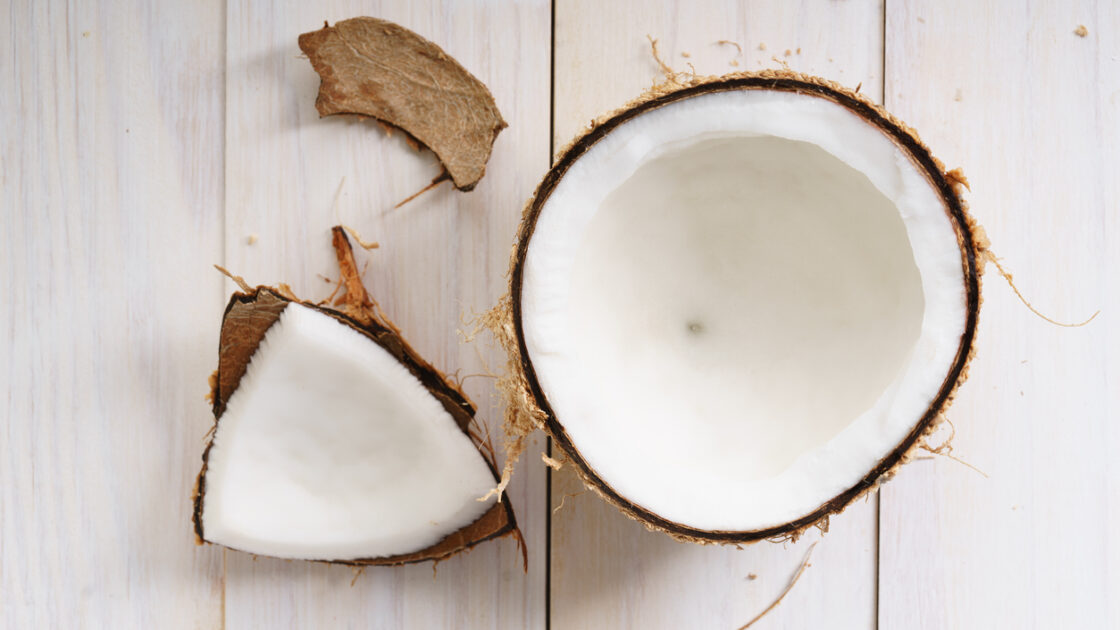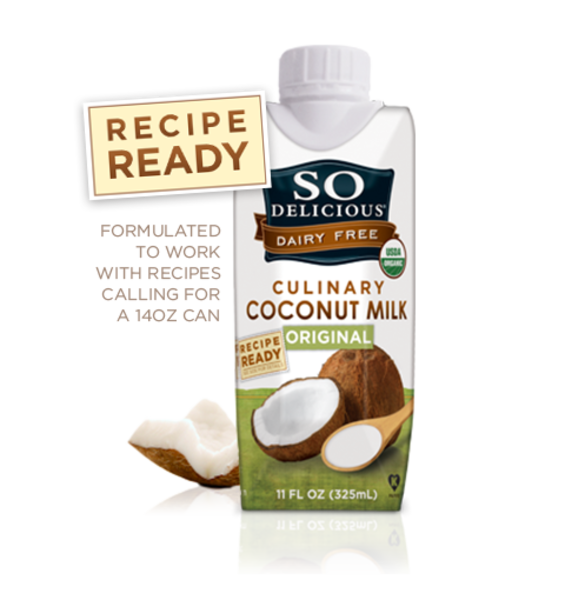How to Choose the Best (and Least Processed) Coconut Milk

I’m never without coconut milk. It’s included in so many of my favorite recipes from tofu coconut curry to coconut chia seed pudding and coconut lemon grass soup. It’s a rich, delicious, plant-based staple. But like so many of us, canned foods scare me. I’m nervous about chemicals like bisphenol A (BPA). That’s why I wanted to dive deep into the industry and see how my favorite milk is made.
The Health Benefits of Coconut Milk
As you may know already, coconuts are highly nutritious. Here are just a few of the nutritional benefits:
- Rich in fiber.
- Loaded with nutrients like C, E, B1, B3, B5, and B6.
- Contains minerals like iron, calcium, and magnesium.
- Coconut milk is a luscious, plant-based alternative to cow’s milk that’s great for vegans or those that are lactose intolerant.
- Contains medium chain fatty acids, which though saturated, are easily absorbed into the body and don’t raise your cholesterol like other saturated fats.
- Good for heart health because medium chain fatty acids lower cholesterol and blood pressure, which may in turn lower your risk of a heart attack or stroke.
How Coconut Milk is Made
Coconut milk is made by removing the coconut meat from the coconut and then soaking it for a bit to break it down. Then, the coconut cream rises to the top. This is the thickest, fattiest part of the coconut that’s used in desserts. It’s skimmed off the top and sold as coconut cream, similar to dairy products. The remaining coconut milk is strained a number of times until it becomes thin enough to be canned and sold. It can also be sold fresh, in the milk aisle. But this form of coconut milk isn’t for cooking. It’s used in cereal, coffee, or smoothies.
Choosing the Best Brands of Coconut Milk for Cooking

When it comes to choosing the healthiest culinary coconut milk, here are some helpful tips:
1. Cans = chemicals
The first thing you need to know is that most canned products contain BPA, which is used in the lining of the cans. As you may already know, it’s an endocrine disruptor that can cause developmental and reproductive problems, and may even be a carcinogen. But products labeled as “BPA-free” may not be any better; research has found that BPS (bisphenol S), a common alternative to BPA, may be even more damaging than BPA. Fortunately, you can get the “canned” culinary coconut milk product in cartons now, thanks to So Delicious.
2. Avoid sulfites
Coconut milk may also contain sulfites, which are used as preservatives. Of particular concern is sodium metabisulfite, a sulfite. Sulfites can cause allergies including runny nose, sneezing, headache, tightness in the throat, hives, and asthma attacks.
3. Choose organic
We always recommend choosing organic when available.
It’s also worth noting that coconut milk often contains guar gum, a commonly used stabilizer. (Organic brands contain organic guar gum.) It’s used to stabilize coconut milk, leaving the final product smooth and creamy. While you might not recognize what it is; it’s not harmful. It’s made from guar beans that are milled into a powder and then added to processed foods.
My favorite brands of canned coconut milk are Native Forest Organic and Whole Foods 365 Organic Brand which both contain organic coconut, organic guar gum, and purified water. Also, Trader Joe’s brand, while not organic, doesn’t contain BPA and is made with coconut and water. And as noted already, So Delicious makes a culinary coconut milk in cartons free from BPA and BPS.
Thai Kitchen still uses BPA-lined cans, and other popular brands including Goya and Chaokoh contain sulfites.
What to Look for in Carton Coconut Milk

The consistency of fresh carton coconut milk isn’t the same as canned coconut milk. That’s why it doesn’t do as well in cooking. But it is delicious in your morning granola, coffee, or just to drink by the glass. Here’s what you want to look for in your favorite brands:
1. Choose organic
Organic coconuts are always the best option. Look for the USDA seal on the carton or read the ingredients.
2. Avoid added sugars
This usually means purchasing the “unsweetened” varieties instead of those that use added sweeteners or flavorings like vanilla.
3. Avoid carrageenan
Carrageenan is a common additive in plant milks that’s extracted from red seaweed. It’s been linked to cancers and digestive problems and should be avoided, according to Dr. Weil. The worst part is that many brands of carton coconut milk still contain it.
So Delicious uses organic coconuts and does not contain carrageenan. Silk does not use organic coconuts, but it doesn’t contain carrageenan. Trader Joe’s brand and Coconut Dream both contain carrageenan.
How to Make Your Own Coconut Milk
If you want to take it a step further and eliminate the use of foods that undergo processing, you can make your own coconut milk using fresh shredded, unsweetened coconut.
Ingredients
- 4 cups filtered water
- 11/2 cups unsweetened coconut shreds
Preparation
- Combine hot (but not boiling) water in a blender with coconut. You may have to do it in two batches.
- Be careful not to burn yourself by putting too much water in the blender. Vitamixes in particular work awesome for recipes like these because they break the coconut down so well.
- Blend for three minutes, or until the mixture is smooth and creamy.
- Strain through a cheese cloth. Then strain again and squeeze through the remaining liquid.
- Drink this fresh coconut milk within four days. Again, fresh coconut milk is best used for drinking, whether in a smoothie, coffee, or straight. You can also flavor it with vanilla, strawberry, or whatever your heart desires.

